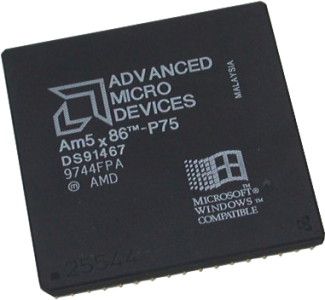From our front-page news:
I'm sure I'm not alone in thinking that sometimes, it's a bit easy to take things for granted, when in reality, things are amazing. Take flying, for example. It's an incredible feat to raise someone off the ground and fly them from one location to the next, but nowadays, it's about as typical as hopping on a bus. Then there's CPUs, and computers in general. Even just 10 years ago, things were so modest compared to today, so sometimes, it's good to take a look at where we've been, to truly appreciate where we are now.
I remember when the first 1GHz processor came out... it was mind-blowing just to picture the amount of performance available. Nowadays, we're almost reaching the same frequency in our smart phones! Times have sure changed, and to help put things in perspective, Maximum PC has posted a detailed article which takes a look at the past 31 years worth of CPUs, starting with the Intel 8086, a chip that boasted an amazing 29,000 transistors!
The picture below is one CPU that immediately caught my eye, for a few reasons. First, could you just imagine a CPU today that has an OS branding etched into its surface? Second, the same CPU became the first to implement an odd naming scheme, one that was actually used to give the customer a rough idea of where it stacked up against the competition. In this case, AMD's chip competed with Intel's Pentium 75, so the name was suffixed with -P75. Such things seem so silly nowadays, but little did we underestimate the other naming debacles that would occur over the years, and not just with CPUs.

The 386, which was later named 386DX to avoid confusion with a lower cost 386SX variant that would debut three years after launch, initially ran at 16MHz and, once again, would eventually double in speed to 33MHz. It also doubled the number of transistors from its predecessor to 275,000 and was Intel's first 32-bit processor. The 386 could address up to 4GB (not MB) of memory, could switch between protected mode and real mode, and added a third 'virtual' mode, which allowed the execution of real mode applications that were unable to run in protected mode.
Source: Maximum PC
I remember when the first 1GHz processor came out... it was mind-blowing just to picture the amount of performance available. Nowadays, we're almost reaching the same frequency in our smart phones! Times have sure changed, and to help put things in perspective, Maximum PC has posted a detailed article which takes a look at the past 31 years worth of CPUs, starting with the Intel 8086, a chip that boasted an amazing 29,000 transistors!
The picture below is one CPU that immediately caught my eye, for a few reasons. First, could you just imagine a CPU today that has an OS branding etched into its surface? Second, the same CPU became the first to implement an odd naming scheme, one that was actually used to give the customer a rough idea of where it stacked up against the competition. In this case, AMD's chip competed with Intel's Pentium 75, so the name was suffixed with -P75. Such things seem so silly nowadays, but little did we underestimate the other naming debacles that would occur over the years, and not just with CPUs.

The 386, which was later named 386DX to avoid confusion with a lower cost 386SX variant that would debut three years after launch, initially ran at 16MHz and, once again, would eventually double in speed to 33MHz. It also doubled the number of transistors from its predecessor to 275,000 and was Intel's first 32-bit processor. The 386 could address up to 4GB (not MB) of memory, could switch between protected mode and real mode, and added a third 'virtual' mode, which allowed the execution of real mode applications that were unable to run in protected mode.
Source: Maximum PC
